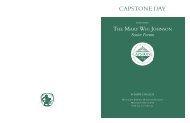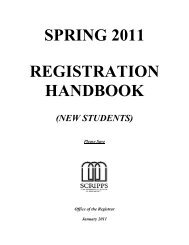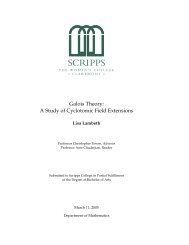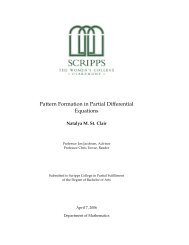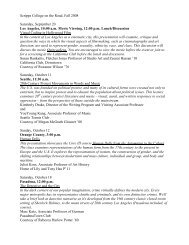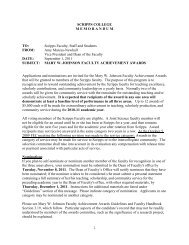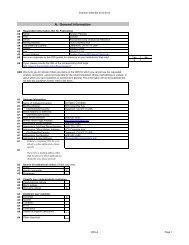Sophie Germain: mathématicienne extraordinaire - Scripps College
Sophie Germain: mathématicienne extraordinaire - Scripps College
Sophie Germain: mathématicienne extraordinaire - Scripps College
Create successful ePaper yourself
Turn your PDF publications into a flip-book with our unique Google optimized e-Paper software.
What then 65<br />
This means that if P is a prime,<br />
(aP ) P + Y P + Z P ≡ aP + Y + Z (mod P )<br />
≡ 0 + Y + Z (mod P )<br />
≡ Y + Z (mod P )<br />
≡ 0 (mod P ),<br />
so Y ≡ −Z (mod P ).<br />
In fact, by Chinese Remainder Theorem, if P is a product of different<br />
primes, we get exactly the same results.<br />
Chinese Remainder Theorem.<br />
Let b, c, m, and n be integers such that m and<br />
n are relatively prime. Then the simultaneous congruences<br />
x ≡ b (mod m) and x ≡ c (mod n)<br />
have exactly one solution with 0 ≤ x < mn.<br />
In particular, if x ≡ b (mod m) and x ≡ b (mod n), then x ≡ b (mod mn).<br />
Since P is a product of different primes p i and aP ≡ 0 (mod p i ) for all i,<br />
then aP ≡ 0 (mod P ) and Y ≡ −Z (mod P ).<br />
Therefore, if X P + Y P + Z P = 0 has non-trivial integer solutions, x, y,<br />
and z when P is a product of unique primes, then x is divisible by P and<br />
y = bP − z for some integer b.<br />
This typical number theoretical approach to Fermat’s Last Theorem is<br />
possible due to the consequences of <strong>Sophie</strong> <strong>Germain</strong>’s Theorem. Her ap-





